How to Afford Long-Term World Travel
pt 7 – Minimizing Costs on Transportation
Transportation costs vary tremendously from country to country around the world. In N. America, Europe, Australia, New Zealand, Japan and other highly-developed countries, transportation is usually quite expensive. But in many developing countries, public transportation is very inexpensive. So depending on which part of the world you’re traveling through, transportation could be a major expense or a minor one.
That having been said, within each region of the world and each country there are generally several different pubic transportation options available. Which options you choose can make a huge difference in your total transportation costs.
Here are 9 ‘rules of the road’ for minimizing transportation expenses while traveling the world:
1. Minimize Flights
Of all the forms of transportation available, flying is generally the most expensive. By using overland transportation as much as possible, you’ll keep your transportation costs to a minimum.
That having been said, sometimes flying can actually be cheaper than going overland, particularly for long distances. If the overland route takes 2-3 days or more, you should take into account the total costs involved in the journey. That would include food for the duration of the trip and perhaps staying overnight one or more times. Then other incidental expenses would inevitably arise, such as transport from stations to lodging and personal daily needs.
If you don’t particularly want to see or do anything en route to your destination, and the only reason for going overland is to save money, don’t forget to factor in all the costs involved before deciding whether it’s indeed cheaper to go overland than to fly. You might also want to consider the value of your time.
In the USA, because of the huge hike in gasoline prices during the past few years, it’s now generally much cheaper to fly long distances than to drive, take a bus or a train. In fact, flights can cost 1/2 – 1/4 the price of ground transportation.
In addition, no matter where you’re traveling in the world, you can sometimes get super cheap flight deals that will actually be cheaper than going overland. A perfect example in Asia is Air Asia’s frequent free and nearly-free flight deals.
The best thing to do is check out the cost of all your options to find the cheapest way to get to your destination.
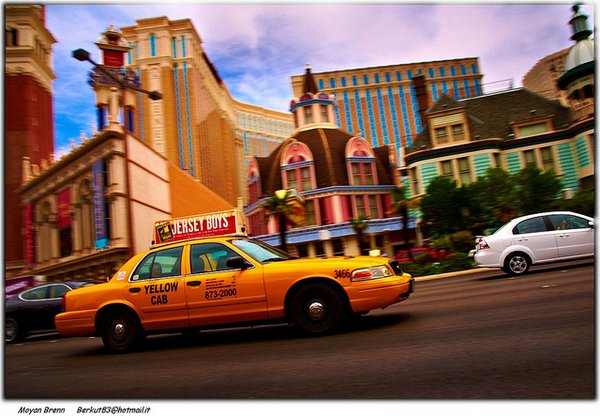
2. Don’t use taxis or other private-hire transport
Even though taxis in many countries are considerably less expensive than their counterparts in the USA or Europe, taxis are still by far the most expensive ground transportation. Taxis basically are not part of a budget travelers’ lifestyle. As a rule, don’t use them.
However, there might be cases when you have no choice but to use a taxi. For instance, at some airports the only way to get anywhere from the airport is taxi service. If absolutely no buses, motorcycle taxis, trishaws or other ground transportation is available, well then you’ll have to take a taxi or walk.
In many cities public transportation stops fairly early at night, say 11 pm or midnight. If you’re out clubbing or partying into the morning hours some distance from your accommodation, you might have to take a cab.
You might also end up in a situation where it would be dangerous to get around any way except taxi. For example, arriving at night in a place that’s known for night time crime. Obviously, take a taxi rather than risk your safety.
But minimize taxis as much as possible.
3. Skip joining organized tourist transportation
International tourism is so well developed in most countries of the world that transportation services geared specifically to tourists are well established. They often use larger, more luxurious buses or vans than those used by normal local transportation in their country. They also often offer ‘package’ transport, which might include pick-up at your hotel and a combination of vans, buses and boats to reach the destination.
In most cases, these tourist transportation packages cost considerably more than simply using local transportation on your own.
Another downside to such tourist services is that you’ll be hauled around like sheep with a group of other tourists. You won’t be mingling with locals. And the trips often include long waits between connections, forced stop-offs at souvenir stores and group meals at tourist restaurants that usually have fairly crappy food. Yuk, who wants to do any of that?
This isn’t always the case though. Sometimes such tourist transport services actually do offer the most economical and easiest way to get from point A to point B. It depends on what would be involved in taking local transport. It’s worth checking both options and choosing the least expensive and/or most convenient.
4. Use Local Transportation
In addition to being much cheaper, local transportation (I mean buses, trains, etc that the local people use) gives you a MUCH more authentic experience of the country. You’ll be on-board almost entirely with local people. No other tourists in sight.
Besides, you’ll have the opportunity to use all sorts of unique local transportation such as trishaws, tuk-tuks, horse-n-carts, rikshaws and river ferries
How fun is that?!
5. Find out the real rate before taking any local transportation
In many countries, local transportation drivers have a habit of automatically over-charging westerners. They might up the fare anywhere from an extra 50% to 3 or 4 times the real rate.
To make sure you’re not taken advantage of, before you catch that local transport, ask your guest house staff or any local at a shop, restaurant or even a taxi driver what the normal cost is from A to B.
Once you’re negotiating with the driver, make sure you settle on a price before you start. If you don’t discuss it and wait until you arrive at your destination, you might have a huge bill in store for you.
If the driver quotes you a higher fare, don’t express anger or shout or yell. Tell him in a friendly manner, preferably with a smile or a playful sideways glance, what the real fare is. You might have to stand your ground for a while. But as long as you remain friendly and unruffled, they’ll probably give in. If, on the other hand, they get pissed off and/or ask you to get off the bus, well then you’ve obviously accidentally quoted a fare that’s too-low. Pay what they ask with an apology or get off the bus.
6. Taking overnight buses or trains saves you one night’s accommodation fee
I’m not a big fan of overnight buses. I just can’t sleep on them. But I am a huge fan of overnight sleeper trains. I can lay in my own bed and sleep to the soothing chug-chug of the train.
If you can handle either of these overnight options for long overland trips, you’ll save yourself one night’s accommodation.
7. Travel by Bicycle
Cycle touring will cut your transportation costs to almost zero. Depending on what countries you’ll be traveling through, that could mean saving a huge chunk of money or just a little.
However, generally avoiding transportation costs is NOT the primary reason to travel by bicycle. It’s a great and rewarding way to visit a country. You go at a slow enough pace and short enough distances to really get into the culture and interact with locals. You see, smell and hear everything along the way- flowers, insects, the great outdoors.
On the other hand, having a bicycle could actually cost you a bit more money. If you’ll sometimes be heaving your bike onto a bus, train or flight, you might have to pay fees for your bike. They are usually minimal and many flights don’t charge at all. A bike packed in a box is usually considered normal check in luggage. But this varies greatly between airlines. So check first. Airlines in USA and Europe tend to charge quite high fees for carrying bikes. International and Asian carrier tend to not charge.
Usually traveling by bicycle saves money overall. If cycle touring sounds interesting to you, check out my Bicycle Travel stories or my Cycling in Bali series. There are also several other travel bloggers who are traveling the world by bike. Check their sites to find out what it’s like.
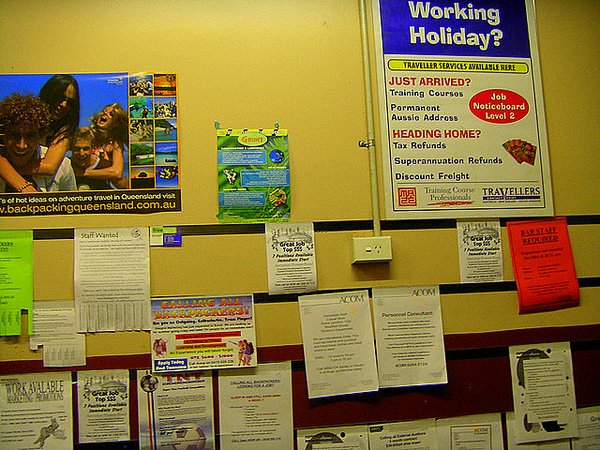
message board at Australian hostel
8. Share rides with other travelers
In Australia, where distances between famous destinations are far and transportation is expensive, there’s a well-organized network among travelers to share vehicles with other foreign visitors. Signs are regularly posted at backpackers, hostels, campgrounds and other places that travelers hang out. Usually one traveler has bought a vehicle to drive around Australia. Then he/she searches for other travelers to join and share fuel costs, possibly helping to drive as well.
I used this system for several of my longer road trips around Oz. I met some great people and had a marvelous time.
In Europe, too, there’s a very extensive network of transportation sharing. Called ‘ride share’ or ‘car pooling’, several websites are dedicated to connecting people who want to get from one city to another all over Europe and the UK. Some websites are available in several languages. You generally have to join the website (often free) in order to search for rides. This great share system can save you loads of money on public transportation, help you meet new friends, and save on greenhouse gas emissions. Save money and the environment all at once!
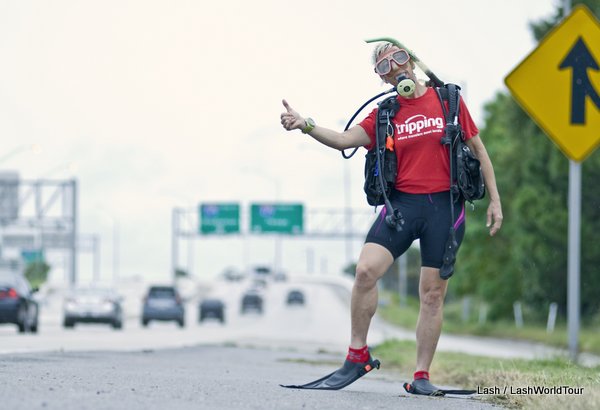 9. Hitch hike
9. Hitch hike
Obviously hitch hiking can be risky. I don’t recommend it as your main mode of transportation. Obviously it could be safe in some countires but downright dangerous in others. Then in some places it might not work becauase the local drivers don’t understand what you’re trying to do!
I have hitch hiked a few times over the years and I find it great fun. BUT, big BUT, I’ve only done it in places I was SURE were safe. I hitch hiked to save money on expensive transportation or to get around where local public transportation didn’t exist.
I’ve hitch hiked in Japan several times, which was quite amusing since they generally didn’t know what the heck I wanted to do. I’ve also hitch hiked short distances (like across town sort of thing) in places where I lived for several months at a time, knew many locals, and knew beyond doubt that I’d be safe. Specifically, I’ve hitch hiked in Amed, Bali and around Ao Nang, Krabi, Thailand. In such cases it helps immensely to speak the language.
Hitch hiking could be an option to keep in mind for such situations that are safe.
QUESTIONS:
Which of these transportation ‘rules of thumb’ do you use?
Do you have any other tips or suggestions for saving money on transportation?
————————————————————————————————-
You might also find the following useful:
How to Afford Long-Term World Travel Series
pt 6 – Minimizing Costs on Accommodation
(* Flckr CC photo credits: Aigle_Dore / sercasey *)
—————————————————————————————————————————————–







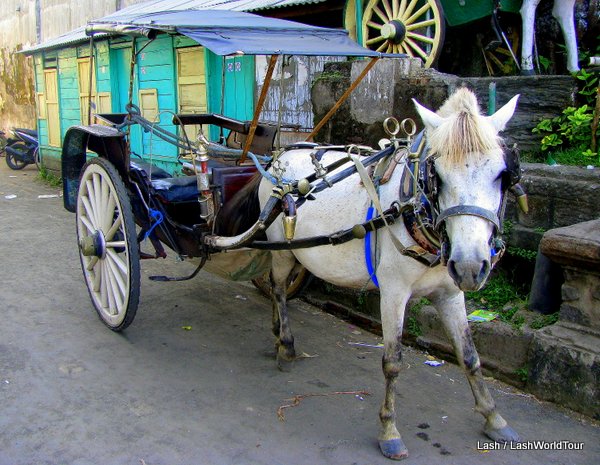

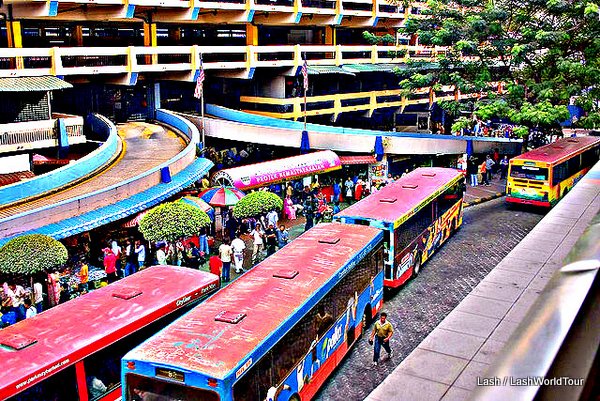
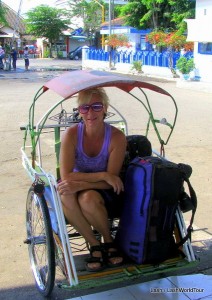
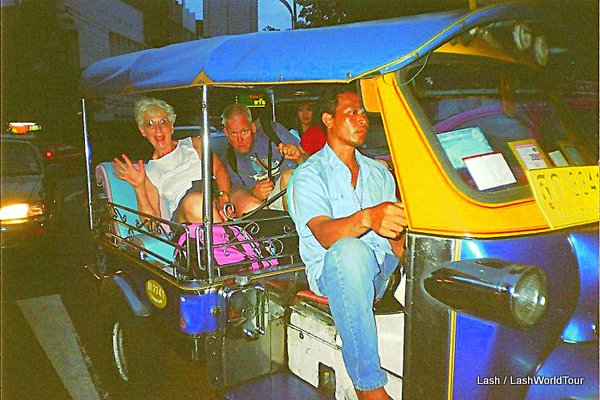

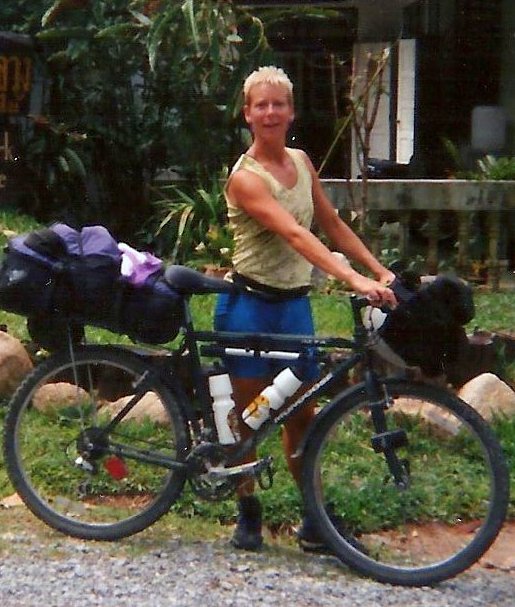

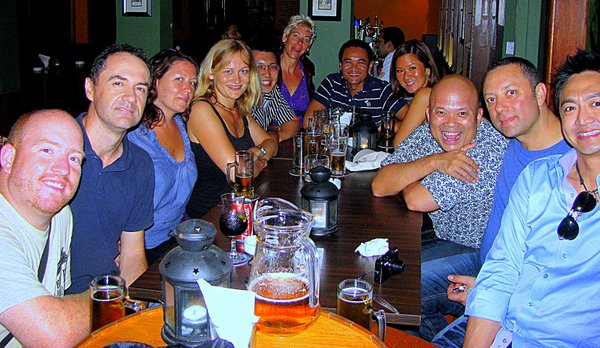

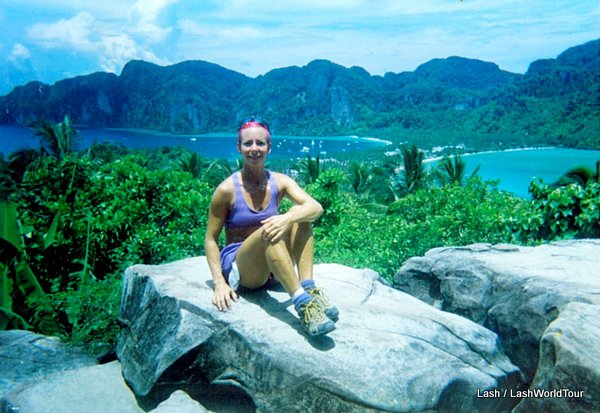

 Hi! I'm Lash, an American nomadic world traveler who's been traveling solo since 1998. I’m passionate about traveling the world nomadically and then sharing it all with you. I hope to inspire you to travel the world, to entertain you with tales from the road, and to help you reach your travel dreams. Welcome!
Hi! I'm Lash, an American nomadic world traveler who's been traveling solo since 1998. I’m passionate about traveling the world nomadically and then sharing it all with you. I hope to inspire you to travel the world, to entertain you with tales from the road, and to help you reach your travel dreams. Welcome! 




1 pings
Travel Bloggers » LashWorldTour
2015/02/06 at 11:10 am (UTC 8) Link to this comment
[…] pt 7 – Minimizing Costs on Transportation […]